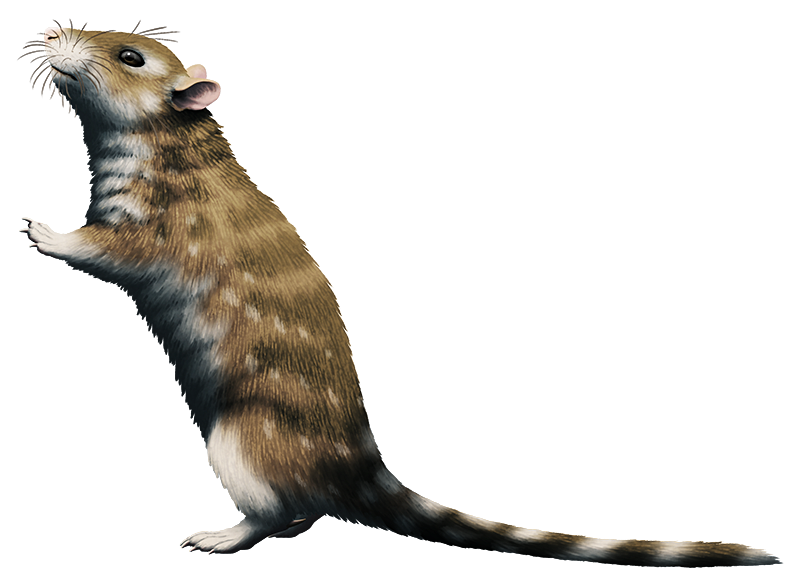Litovoi tholocephalos, a multituberculate mammal from the Late Cretaceous of Romania (~70-66 mya). Living on what was at the time the large offshore Hațeg Island, this rat-sized animal (about 25cm /10″ long) was part of a lineage of insectivorous multis called the kogaionids, with the same sort of red-colored enamel on its teeth as other species like Barbatodon.
Its brain was surprisingly tiny proportional to its size – one of the smallest known brain-to-body ratios of any mammal, and more similar to those of non-mammalian cynodonts – but it also seems have been highly specialized for processing sensory input, with relatively enormous regions associated with smell, eyesight, balance, and motor control. The olfactory bulbs of its brain were so enlarged, in fact, that they caused its skull to bulge out into an unusually dome-shaped forehead.
Its reduced brain size may have been due to limited food availability on its isolated island home. Brains are very metabolically expensive organs, and some other extinct island mammals like hippos, hominids, and goats are also known to have evolved smaller brain sizes. Modern shrews even seasonally shrink their own brains during winter for similar energy-saving reasons.

